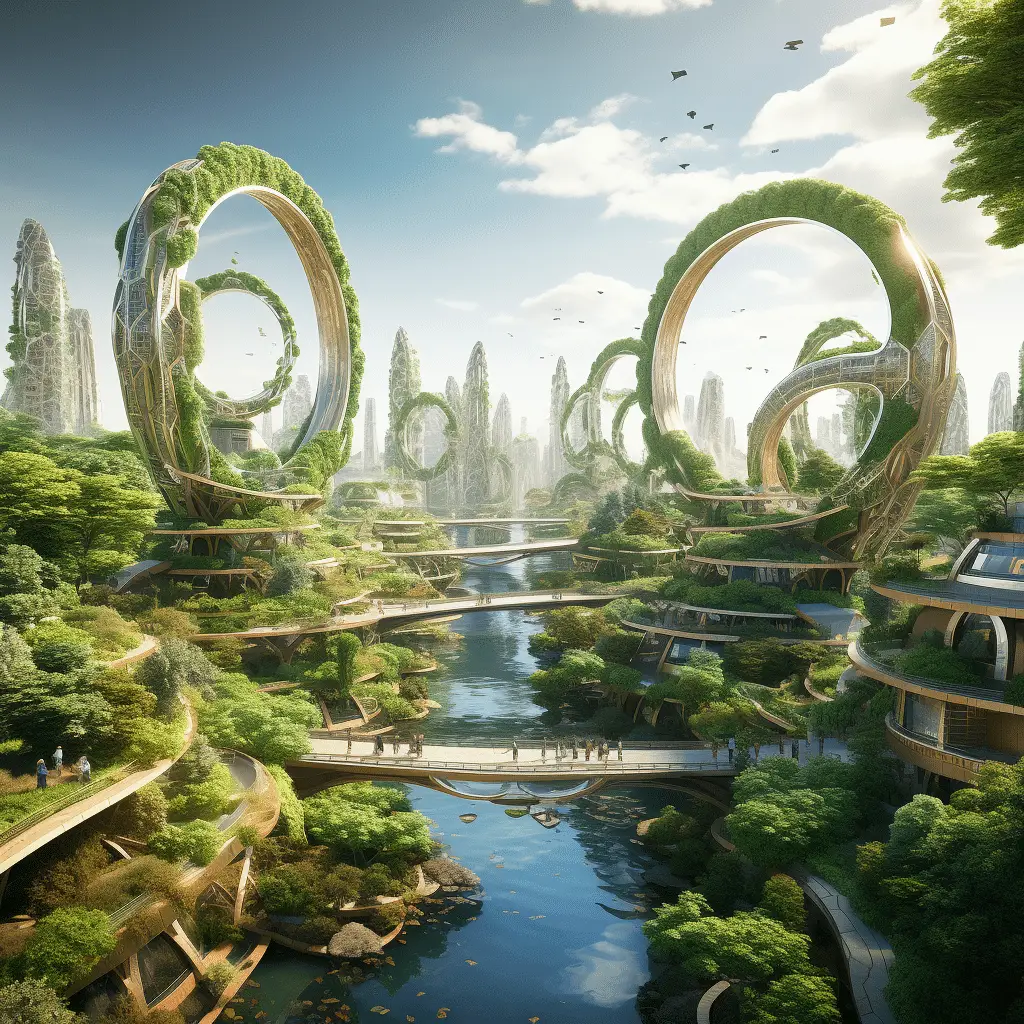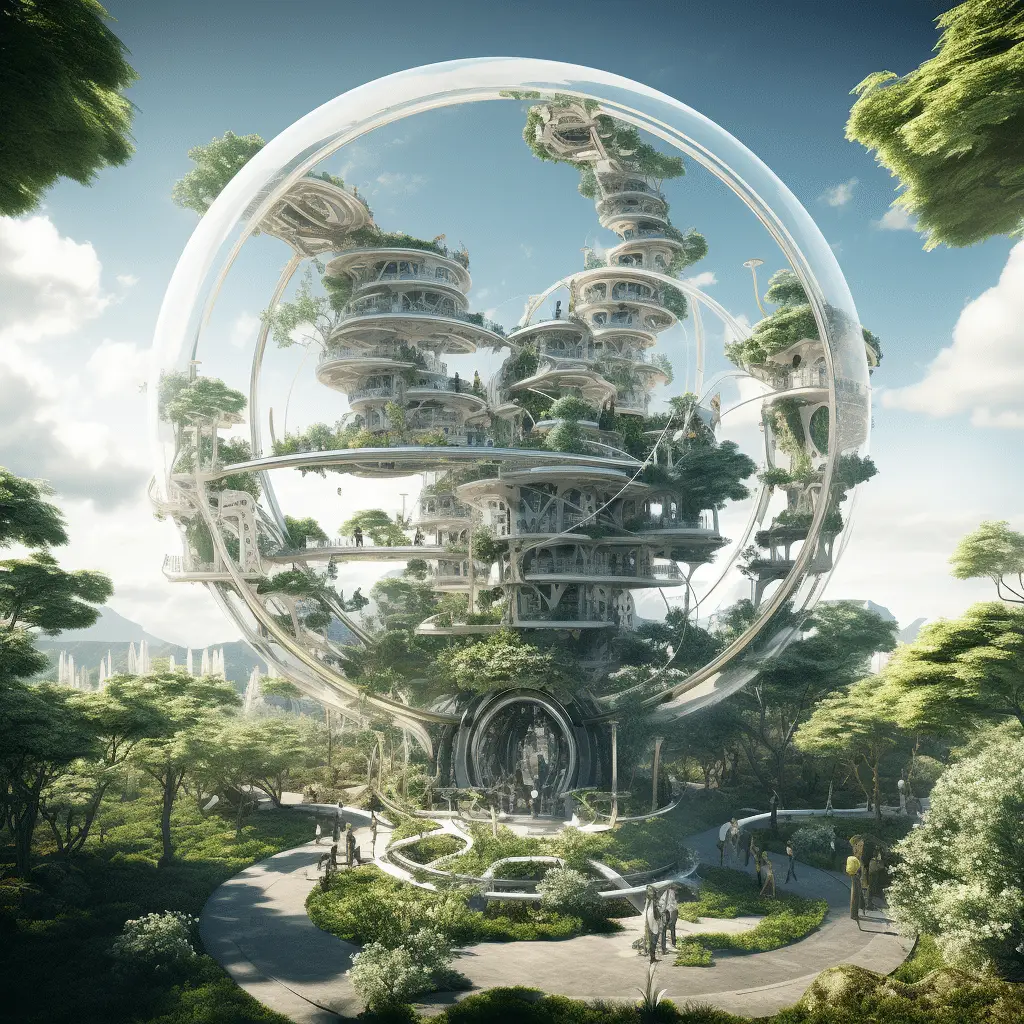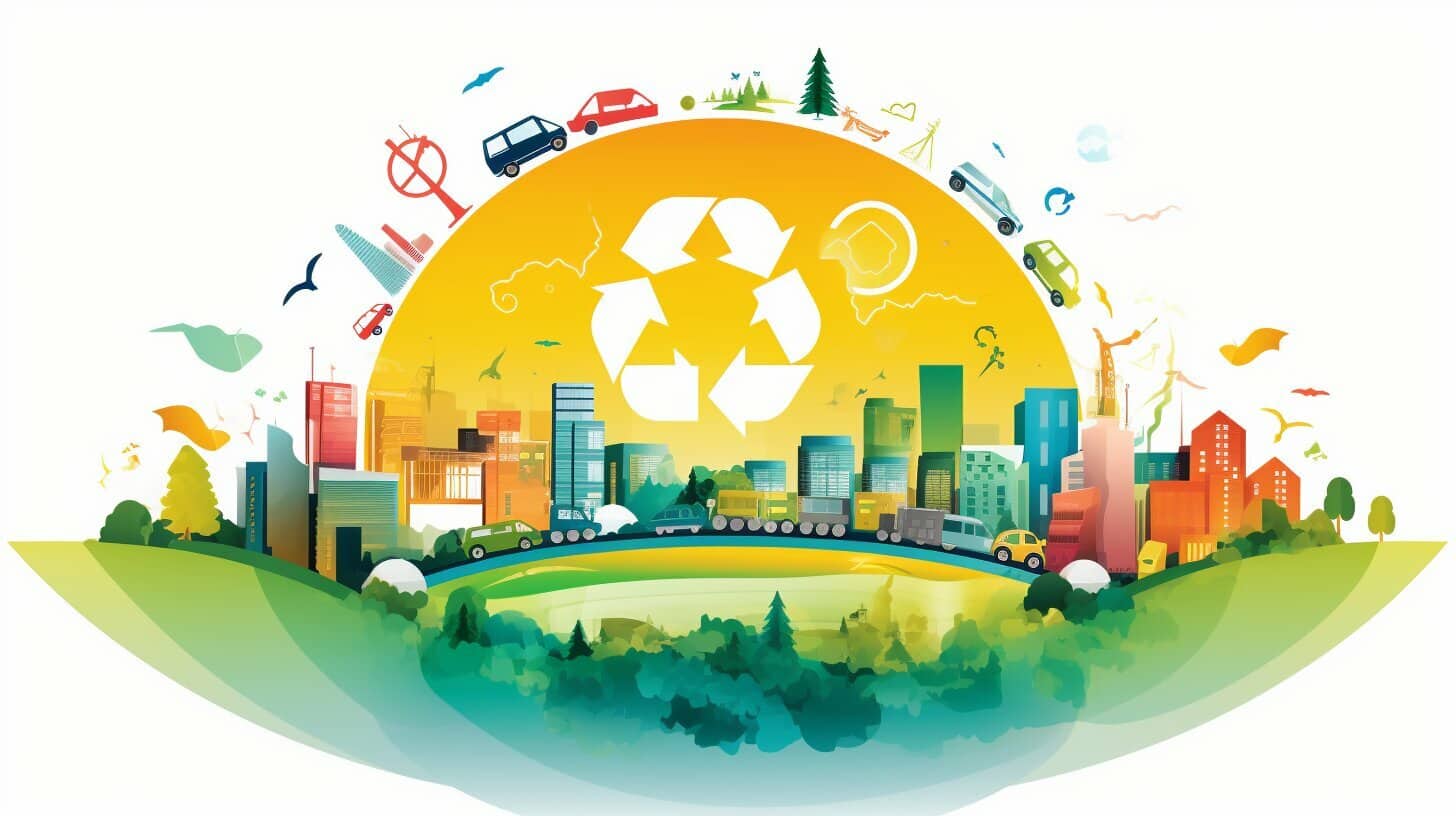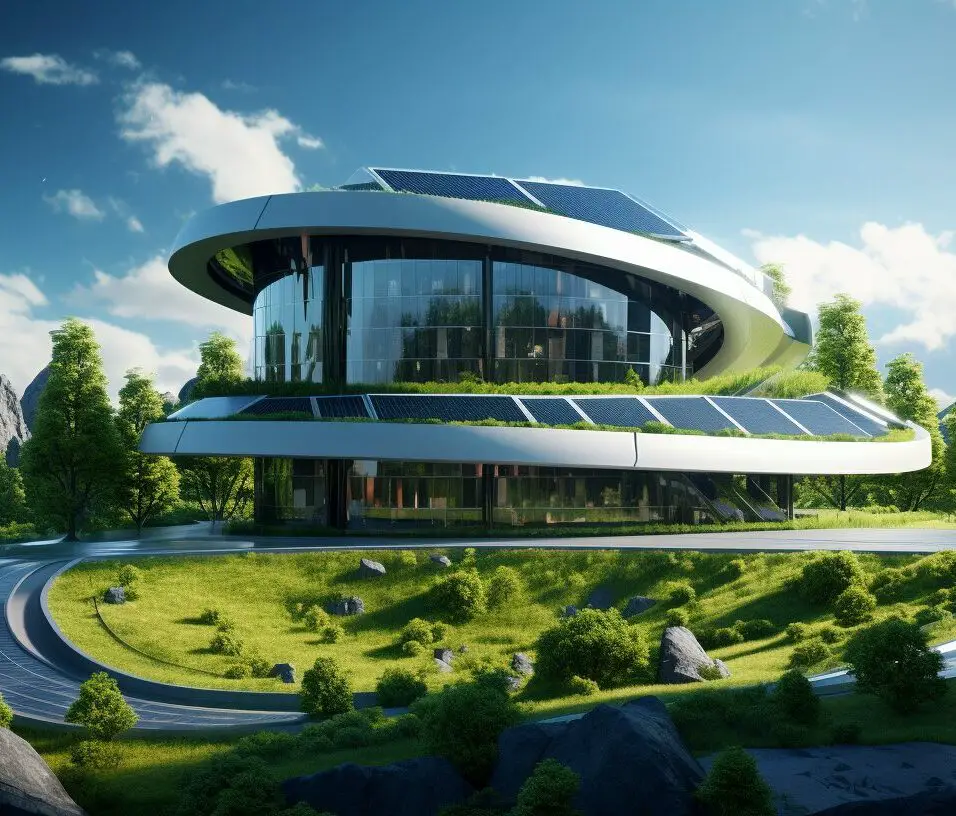Circular Design For A Regenerative Future
Circular Design offers a transformative approach to sustainability by revolutionizing the way businesses operate in the modern world. Designing for circularity involves shifting from a linear approach to growth to a regenerative approach. The scale of design has expanded from products to economic systems, and the target audience has expanded to a global web of people. Designers need to explore new ways to create sustainable, long-lasting value in the circular economy. Circular design focuses on creating products and services for the circular economy by rethinking the process from the beginning, with a focus on repair, reuse, recycling, and transformation. The principles of circular design include understanding different circular design solutions, defining goals, making prototypes, and launching products.
Key Takeaways:
- Circular Design revolutionizes the way businesses operate by embracing sustainability.
- Designers need to shift from a linear growth approach to a regenerative approach.
- The scale of design has expanded to encompass economic systems and a global web of people.
- Circular Design focuses on creating sustainable, long-lasting value in the circular economy.
- Principles of circular design include understanding different circular design solutions, defining goals, making prototypes, and launching products.
Understanding Circular Design

Circular Design goes beyond individual products, encompassing economic systems and connecting a global community. It is a holistic approach that aims to create sustainable solutions and revolutionize how businesses operate in the modern world. By shifting from a linear growth model to a regenerative one, Circular Design seeks to minimize waste, extend product lifecycles, and promote the efficient use of resources.
The Scale of Design
In the context of Circular Design, the scale of design has expanded significantly. Designers are no longer solely focused on the aesthetics and functionality of individual products. They now have the responsibility to consider the broader economic systems in which these products exist. This means taking into account the entire lifecycle of a product, as well as the interconnectedness of various stakeholders and their impact on the environment.
By designing with a circular mindset, we can create products that are not only beautiful and functional but also contribute to a more sustainable future. This involves reimagining the entire design process, from the sourcing of materials to the manufacturing, distribution, and end-of-life stages. Circular Design encourages designers to rethink traditional linear models and adopt innovative approaches that prioritize circularity and environmental stewardship.
A Global Web of People
Circular Design also extends beyond physical products to encompass a global web of people. It recognizes that sustainable solutions cannot be achieved in isolation but require collaboration and collective action. Designers play a crucial role in engaging with various stakeholders, including manufacturers, suppliers, consumers, and policymakers, to drive positive change.
By fostering collaboration and sharing knowledge, we can create a global community that is committed to advancing Circular Design principles. This community acts as a catalyst for innovation and promotes the adoption of sustainable practices across industries and geographical boundaries.
| Circular Design Principles | Description |
|---|---|
| Understanding different circular design solutions | Exploring innovative approaches that prioritize sustainability and circularity |
| Setting clear goals | Defining specific objectives and targets to drive sustainable design efforts |
| Creating prototypes | Testing and refining concepts to ensure alignment with circular design principles |
| Launching sustainable products | Successfully introducing circular design solutions to the market |
Rethinking the Design Process
Circular Design places a strong emphasis on rethinking the traditional design process to create products and services that contribute to the circular economy. It requires designers to explore new ways of creating sustainable, long-lasting value by prioritizing repair, reuse, recycling, and transformation. By shifting from a linear growth approach to a regenerative approach, Circular Design aims to revolutionize the way businesses approach sustainability.
Creating Sustainable Value
In Circular Design, the focus is on creating products and services that have a positive impact on the environment and society. This means designing for durability, modularity, and recyclability, and considering the entire lifecycle of a product. By incorporating these principles into the design process, designers can ensure that their creations contribute to the circular economy and minimize waste.
One of the key aspects of Circular Design is the exploration of new materials and manufacturing processes that align with circular principles. This involves using renewable resources, reducing energy consumption, and minimizing the use of harmful chemicals. By embracing these sustainable practices, designers can help drive the transition to a more circular and sustainable economy.
Rethinking the Process
Circular Design requires a fundamental shift in the way designers approach their work. It starts with a thorough understanding of the existing linear systems and identifying opportunities for circularity. Designers need to consider the entire lifecycle of a product, from sourcing and production to consumption and disposal.
| Key Principles of Circular Design |
|---|
| Understanding different circular design solutions |
| Defining clear goals |
| Creating prototypes |
| Successfully launching sustainable products |
By adhering to these principles, designers can contribute to the paradigm shift towards a circular economy and help create a more sustainable future.
Principles of Circular Design
The principles of Circular Design involve exploring various solutions, setting goals, prototyping, and successfully launching sustainable products. To create effective circular design solutions, designers must first understand the different approaches available. This requires researching and analyzing existing models and strategies that prioritize sustainability and circularity. By studying successful examples and considering the unique needs and challenges of their own projects, designers can develop innovative solutions that contribute to the circular economy.
Defining clear goals is another crucial aspect of Circular Design. By setting specific objectives and targets, designers can focus their efforts and ensure that their designs align with circular design principles. These goals can include reducing waste, extending product lifespan, or using renewable materials. By establishing measurable goals, designers can track progress and make informed decisions throughout the design process.
Prototyping is an essential step in Circular Design. It allows designers to test and refine their concepts, ensuring that the final product meets the criteria of circularity and sustainability. Through prototyping, designers can identify potential flaws, make necessary adjustments, and optimize their designs for circularity. This iterative process allows for continuous improvement and ensures that the final product aligns with circular design principles.
| Solution | Goal | Prototype | Launch |
|---|---|---|---|
| Explore various circular design solutions | Define clear goals for circularity | Test and refine prototypes for sustainability | Successfully launch sustainable products |
Successfully launching sustainable products is the ultimate goal of Circular Design. Designers must navigate the challenges and opportunities associated with introducing circular design solutions to consumers. This requires effective communication and education to convey the benefits of circular products and encourage consumer adoption. By considering factors such as pricing, availability, and marketing strategies, designers can increase the likelihood of successful product launches in the market.
Circular Design Solutions
Circular Design offers a range of solutions that can effectively address the challenges of sustainability and circularity. Designing for a circular economy requires a shift in mindset from the traditional linear approach to growth. It involves reimagining the entire design process, from the initial concept to the final product, with a focus on repair, reuse, recycling, and transformation.
One of the key principles of Circular Design is understanding different solutions that promote circularity. This includes exploring innovative approaches such as product-as-a-service models, where products are leased or shared instead of being owned. By prolonging the life cycle of products and reducing waste, these solutions contribute to a more sustainable future.
Table: Circular Design Principles
| Principles | Description |
|---|---|
| Repair | Designing products that can easily be repaired and maintained, extending their lifespan. |
| Reuse | Promoting the reuse of components or entire products to minimize waste and resource consumption. |
| Recycle | Designing products and packaging that can be efficiently recycled, reducing the need for virgin materials. |
| Transformation | Creating products that can be transformed into new products at the end of their life cycle. |
Circular design helps businesses be more sustainable. It can make money and save money. It’s good for the environment. It’s good for people. It can lead to a circular economy.
Defining Clear Goals
Clear goals are essential in Circular Design as they provide a roadmap for sustainable and effective design solutions. When setting goals, designers need to consider the principles of circular design and how they align with the overall objectives of their project. By clearly defining their goals, designers can focus their efforts on creating products and services that contribute to the circular economy and minimize negative environmental impact.
The Importance of Specific Objectives and Targets
In Circular Design, it is crucial to establish specific objectives and targets that guide the design process. These goals should be measurable, achievable, relevant, and time-bound. For example, a goal can be to increase the percentage of recycled materials used in a product by a certain percentage within a set timeframe.
Setting clear goals helps designers stay focused and ensures that their design solutions are aligned with circular design principles. It also enables them to measure the success and impact of their designs, making it easier to communicate the benefits to stakeholders and consumers.
Creating a Table: Circular Design Goals
| Goals | Measurement | Timeline |
|---|---|---|
| Increase use of recycled materials | Percentage of recycled materials used | Within the next 2 years |
| Extend product lifespan | Years of usability | Within the next 3 years |
| Minimize waste generation | Amount of waste produced | Ongoing |
By regularly reviewing and updating their goals, designers can ensure that their circular design strategies remain relevant and impactful. Clear goals provide a sense of direction and purpose, driving designers to create innovative solutions that contribute to a more sustainable future.
Prototyping for Circular Design
Prototyping is important in Circular Design because it helps designers refine their ideas and make sure they align with circular design principles. Designers can use prototypes to test different materials, manufacturing processes, and product lifecycles to find the most sustainable options. This iterative approach allows for continuous improvement and optimization, ensuring the final product meets high circularity standards.
During the prototyping phase, designers can experiment with innovative materials and production techniques that minimize waste and maximize durability. They can also identify opportunities for repair, reuse, and recycling throughout the product’s lifecycle. This focus on circularity reduces environmental impact and creates new business models, like repair services or product take-back programs.
For a more comprehensive understanding of the principles and benefits of Circular Design, please refer to the table below:
| Principles of Circular Design | Description |
|---|---|
| Understanding different circular design solutions | Explore various approaches to designing for circularity, such as modular design, product-as-a-service, and closed-loop systems. |
| Defining clear goals | Set specific objectives for circular design, such as reducing waste, extending product lifespan, or minimizing resource consumption. |
| Making prototypes | Develop physical or digital models of the product to test and refine ideas, ensuring alignment with circular design principles. |
| Launching sustainable products | Successfully introduce circular design solutions to the market, considering factors like consumer demand, supply chain integration, and environmental impact. |
Launching Sustainable Products
To launch sustainable products, one must consider consumer needs, market trends, and circular design. Understanding the target audience and how the product can meet their needs sustainably is crucial. Market research can help identify consumer preferences and incorporate recycled materials, durability, and easy repair or recycling. Highlighting the environmental benefits and positive impact of the product can generate consumer interest and support. Circular design allows for products that benefit the environment and society while meeting consumer needs.
To create sustainable products, businesses must consider consumer needs, market trends, and circular design. Understanding the target audience, researching the market, and promoting the benefits of circular design can help businesses succeed in introducing sustainable products and promoting a more sustainable future.
Table: Key Considerations for Launching Sustainable Products
| Consideration | Description |
|---|---|
| Consumer Needs | Understanding what consumers are looking for in terms of sustainability and circularity to tailor the product accordingly. |
| Market Trends | Conducting market research to identify current trends and preferences related to sustainable products. |
| Circular Design Principles | Incorporating circular design principles such as using recycled materials, designing for durability, and enabling easy repair or recycling. |
| Communication | Effectively communicating the environmental benefits and positive impact of the product to generate consumer interest and support. |
Circular Design and the Environment
Circular Design has the potential to significantly reduce the environmental impact of product design and promote a sustainable future. By embracing circularity, designers can minimize waste, conserve resources, and mitigate pollution throughout the entire lifecycle of a product or service.
One key aspect of Circular Design is the emphasis on repair, reuse, recycling, and transformation. These principles challenge the traditional linear model of production and consumption, which often leads to excessive resource extraction and waste generation. Instead, Circular Design encourages innovative approaches that prioritize durability, modularity, and material recovery.
Implementing Circular Design strategies can also help businesses reduce their carbon footprint. By adopting eco-friendly materials, optimizing manufacturing processes, and implementing closed-loop systems, companies can minimize greenhouse gas emissions and contribute to global efforts in combating climate change.
Furthermore, Circular Design extends beyond the physical realm and encompasses broader social and economic dimensions. It encourages collaboration, knowledge-sharing, and the establishment of local and global networks. This interconnectedness fosters sustainable innovation, supports local communities, and promotes responsible consumption patterns.
| Benefits of Circular Design for the Environment: |
|---|
| Reduces waste and resource depletion |
| Minimizes pollution and emissions |
| Supports the transition to a low-carbon economy |
| Promotes sustainable consumption and production patterns |
| Encourages collaboration and knowledge-sharing |
“Circular Design allows us to reimagine our relationship with the environment and create a future where sustainability is at the core of every design decision. By adopting circularity principles, we can minimize waste, reduce pollution, and protect our planet for future generations.”
The Role of Circular Design in Promoting Environmental Stewardship
Circular Design is not merely a trend or a temporary solution; it represents a fundamental shift towards a more sustainable and regenerative approach to design. By considering the environmental impact of every design decision, we can revolutionize the way products are created, consumed, and disposed of. Through Circular Design, we have the power to protect and preserve our fragile planet for generations to come.
Implementing Circular Design Strategies
Implementing circular design strategies can be a transformative journey for businesses, bringing both challenges and considerable benefits. By embracing circularity, companies have the opportunity to align their operations with sustainable principles and contribute to a more regenerative economy.
“Circular design offers a powerful framework for businesses to rethink their approach, from product creation to end-of-life considerations. It’s about designing with the intent to keep materials and resources in use for as long as possible, thereby reducing waste and minimizing environmental impact.” – Sarah Green, Sustainability Consultant
One of the main challenges in implementing circular design strategies is the need for a holistic shift in mindset and practices. It requires a deep understanding of the entire product life cycle and a commitment to integrating sustainability at every stage. This includes reevaluating sourcing materials, manufacturing processes, packaging, distribution, and end-of-life solutions.
A key aspect of successful implementation is collaboration and engagement with stakeholders throughout the supply chain. This means involving suppliers, customers, and recycling partners in the design process to ensure a smooth transition towards circularity. Open communication and sharing best practices can accelerate the adoption of circular design principles.
| Benefits of Implementing Circular Design Strategies |
|---|
| Reduction in waste and environmental impact |
| Cost savings through resource efficiency |
| Enhanced brand reputation and customer loyalty |
| Access to new markets and business opportunities |
| Increased resilience to resource scarcity and supply chain disruptions |
Overcoming Challenges

While the benefits of circular design are significant, there are also challenges to overcome. Implementing circular strategies requires investment in research and development to explore new materials, processes, and business models. Additionally, regulatory frameworks and infrastructure may need to evolve to support the circular economy.
However, the long-term rewards outweigh the initial obstacles. By embracing circular design, businesses can reduce their environmental footprint, improve resource efficiency, and create products with extended lifecycles. This not only benefits the environment but also enhances brand reputation, attracts environmentally conscious consumers, and opens up new market opportunities.
Conclusion
Circular Design can change the way businesses approach design and contribute to a sustainable future. Designers create products and services that prioritize repair, reuse, recycling, and transformation by shifting from a linear to a regenerative approach. The scale of design has expanded to encompass entire economic systems and a global network of individuals.
Designers need to explore new ways to create sustainable, long-lasting value in the circular economy. This involves understanding different circular design solutions, setting clear goals, creating prototypes, and launching products that align with circular design principles.
Implementing Circular Design strategies has challenges, but the benefits are significant. Businesses can reduce negative environmental consequences and contribute to a sustainable future. Circular Design is a paradigm shift that can revolutionize the way we approach design in the business world.
FAQ
Q: What is circular design?
A: Circular design involves shifting from a linear approach to growth to a regenerative approach. It focuses on creating products and services for the circular economy by rethinking the process from the beginning, with a focus on repair, reuse, recycling, and transformation.
Q: What does circular design encompass?
A: Circular design encompasses the scale of design, expanding from individual products to economic systems and a global web of people. It considers the entire lifecycle of products and aims to create sustainable, long-lasting value in the circular economy.
Q: What are the principles of circular design?
A: The principles of circular design include understanding different circular design solutions, defining goals, making prototypes, and launching products. It involves exploring innovative approaches to sustainable design and ensuring alignment with circular design principles.
Q: How do circular design solutions contribute to sustainability?
A: Circular design solutions prioritize sustainability by focusing on reducing waste, utilizing renewable resources, and minimizing negative environmental impacts. They promote a more sustainable and regenerative approach to design and production.
Q: What are the benefits of implementing circular design strategies?
A: Implementing circular design strategies can lead to numerous benefits, including reduced resource consumption, increased product longevity, minimized waste generation, and enhanced brand reputation. It can also drive innovation and create new business opportunities.
Q: How can businesses successfully launch sustainable products?
A: Successfully launching sustainable products requires careful consideration of circular design principles, consumer demands, and market trends. It involves educating consumers about the benefits of circular design and providing easily accessible sustainable alternatives.
Q: How does circular design contribute to a more sustainable future?
A: Circular design contributes to a more sustainable future by promoting resource efficiency, reducing environmental impact, and fostering a shift towards a circular economy. It aims to break away from the linear “take-make-dispose” model and create a regenerative system.
Q: What are the challenges associated with implementing circular design?
A: Implementing circular design can present challenges such as overcoming traditional linear business models, ensuring supply chain cooperation, and changing consumer attitudes and behaviors. However, it also presents opportunities for innovation and long-term business success.
Q: How can designers incorporate circular design principles into their work?
A: Designers can incorporate circular design principles by considering the entire lifecycle of a product, focusing on durability, reparability, recyclability, and incorporating renewable and non-toxic materials. They can also collaborate with stakeholders to ensure circularity throughout the supply chain.








